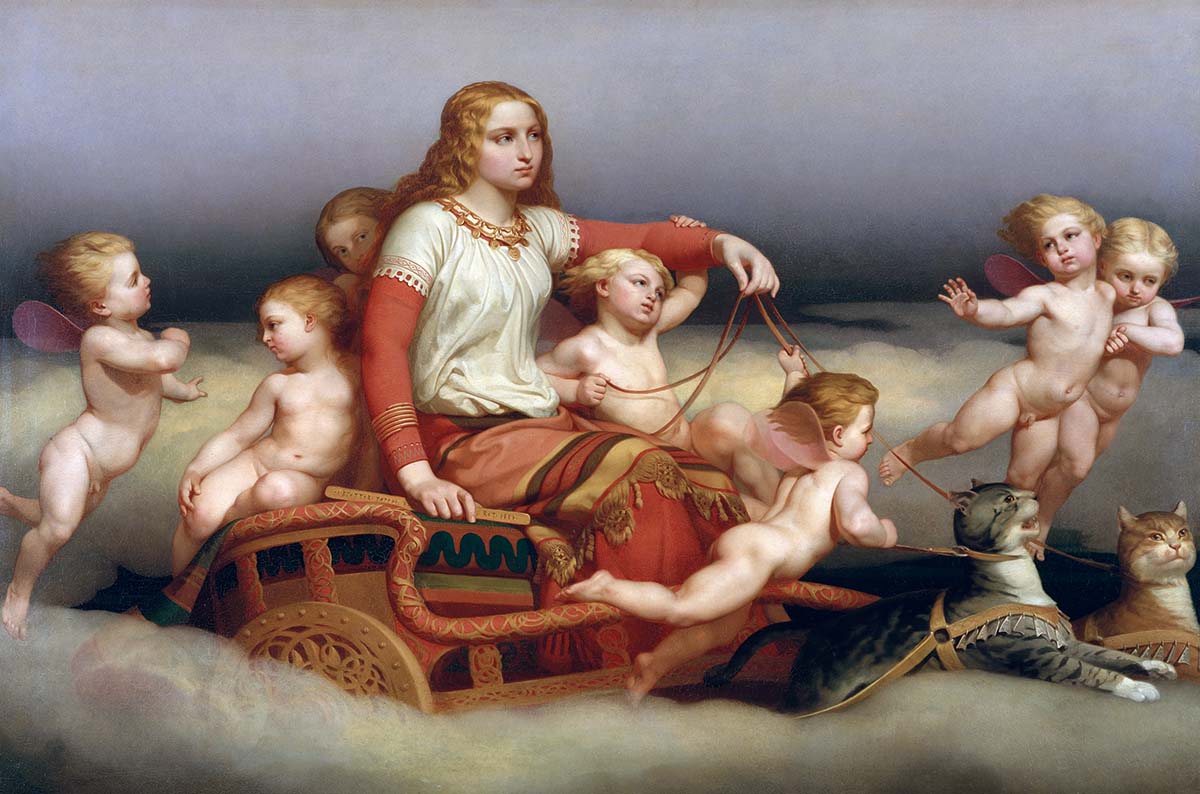Freyja the Token of Truce - 2 minutes read

Freyja, which means ‘lady’, was the Norse goddess associated with war, death, love, sex, beauty, fertility and gold. No wonder she was considered the most desirable and alluring of the gods. She is often depicted, as here by Nils Blommér, in a chariot pulled by two cats. Blommér was a painter from Scania, Sweden’s southernmost province and formerly part of the kingdom of Denmark. He died in Rome in 1853 at the age of 37, having become noted for his vivid portrayals of Nordic mythology and folklore.
Freyja was the ruler of the heavenly field of Fólkvangr (‘field of the people’). Half of those heroes who die facing forward in battle, of whom Freyja has first choice, go there for eternity; the other half are sent to Valhalla, where Odin (or Woden), the chief of the gods, resides.
Freyja, a Vanir, was sent by her people as a token of truce to their rivals, the Æsir. According to the chronicler Snorri Sturluson, writing in the 13th century, she became the wife of Ódr (possibly Odin), a wanderer of the world, who is often absent from the family home, but with whom Freyja has two daughters, Hnoss and Gersemi.
Þrymskviða, a 12th-century poem in the Icelandic Edda cycle, recounts that the hammer belonging to the war god, Thor, was stolen by Þrymr, a giant, who refuses to return it unless he receives Freyja in return. The shape-shifting demi-god, Loki, through his cunning, manages to get the hammer back, after which Thor kills the giant.
This story resonates in Freyja’s most famous modern incarnation, in Das Rheingold, the ‘preliminary evening’ of Wagner’s Ring cycle, in which Loki also plays a significant role. Now called Freia, who in this role is the younger sister of Fricka, Wotan’s wife, she is depicted along with the other gods as a resident of Valhalla.
It is Freia who provides the gods with the golden apples that maintain their youth and power. When she is abducted by the brother giants, Fafner and Fasolt, after Wotan reneges on their payment for building his new fortress at Valhalla, the drama of Wagner’s Gesamtkunstwerk is set in motion as Gotterdämmerung – the twilight of the gods – looms on the horizon.